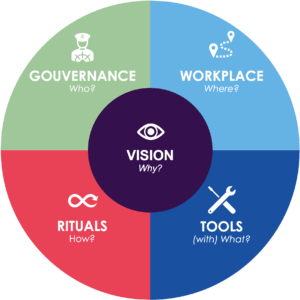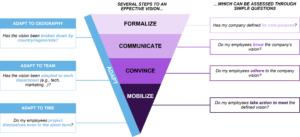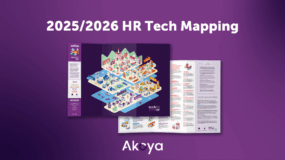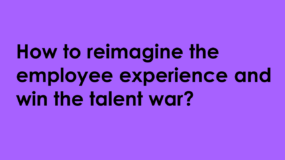Employee Experience: the keys to building a competitive advantage
The war for talent has intensified with the post-Covid economic recovery, and hybrid working patterns have only amplified this phenomenon. As a result, only companies that have developed an Employee Experience aligned with these new needs can succeed in recruiting and retaining the best talent.
However, most companies are well aware of the need to adopt a more attractive work experience: if before the pandemic they already considered the Employee Experience to be important, today 96% think that it has become a priority. Nevertheless, they are still struggling to get to grips with the subject in concrete terms.
In a co-hosted webinar, Maxime Chevallet, Employee Experience Expert at Akoya, who has already published a white paper on the subject in 2019, and Kevin Bourgeois, Co-founder & CEO of Supermood, decided to share several best practices to maximise your talent retention, which they will then formalise in the re-edition of the white paper.
In order to design concrete and sustainable initiatives it is first important to take a step back in terms of what the Employee Experience represents.
Far from being a vague and stratospherical concept, the Employee Experience consists of 5 fundamental pillars
To diagnose your Employee Experience and turn it into a differentiating asset, 5 dimensions should be taken into account:

Of course, you will not be able to work on all these dimensions at the same time and with the same success rate: it is best to target the dimension that seems to be the most essential before applying the following ones.
More specifically, how do one act on the Employee Experience? During the webinar, Maxime (Akoya) and Kevin (Supermood) provided us with some recommendations on two fundamental pillars of the Employee Experience, the vision and the workplace, which we are sharing with you below.
To choose is also to give up: when companies choose their vision, they must understand what they are giving up.
✅ Our guidelines for embodying your vision in your organisation:
Follow these 4 steps to ensure that your vision mobilizes your community:
1) Formalize:
>> It is necessary to identify and define a common vision for the company.
>> When choosing to follow this vision, it is important to understand what you are deciding to give up. For example: by choosing as a people vision the empowerment of its employees at all levels, Decathlon is opting to abandon the idea of managers being responsible for all decision-making for their team.
2) Communicate:
>> You must share this vision with your team to ensure that it is known and acknowledged by everyone.
>> Such communication must be done by choosing the appropriate wording. At Decathlon, the teams talk about the “duty to try” rather than the “right to make mistakes” or the ” co-worker” rather than the “employee”.
3) Convince:
>> Communicating the corporate vision is not enough, employees must also have to buy into it.
>> It is wise to involve them from the formalisation phase onwards to make them feel a part of the direction the company is taking.
4) Mobilize
>> Employees must be given responsibility to continue to co-build this vision over time.
>> You can, for example, get them to set their own salary (as at Lucca) or their own development goals instead of their manager (as at Decathlon).
However, most companies forget to adapt their vision according to:
– Their geographical location, whether international, regional or local,
– Their departments, various teams do not contribute in the same way to the construction of the vision,
– The time, as employees stay less and less time in the same company, you have to take this into account so that they can still contribute, especially if you want them to stay longer!

The more explicit the workplace and work-from-anywhere policy is, the smoother the Employee Experience will be.
✅ Our recommendations to propose a workplace policy adapted to your needs :
1) Synchronous/Asynchronous work
> Every work from anywhere policy must be combined with a flexible working hours offer or a work from anytime policy.
>>There are two forms of temporal work, a “synchronous” work (at fixed working hours) and an “asynchronous” work (with a flexible rhythm that differs from fixed hours).
2) A clear company policy
>> While there is no work formula that is more efficient than the other, a very clear company policy must be put in place regarding this time aspect.
>> Tasks carried out either synchronously or asynchronously must be clarified, for example, by specifying which employees can benefit from such a system and by taking care to adapt to the rhythms and preferences of each individual.
>> It is necessary to address this at the recruitment stage to avoid frustration that could lead to the departure of the employee.
3) Offices adapted to a hybrid work model
>> Offices need to be redesigned to accommodate the new hybrid workforce, particularly when half of the workforce is working remotely and the other half in the office.
>> It is therefore necessary to provide the appropriate equipment such as a good Internet connection, video-conferencing tools, etc.
4) The need to train managers to adapt to new ways of working
>> Besides the work spaces, it is necessary to adapt management practices to the new hybrid reality.
>> It is necessary to train managers, in order to enable them to better support their hybrid teams.




